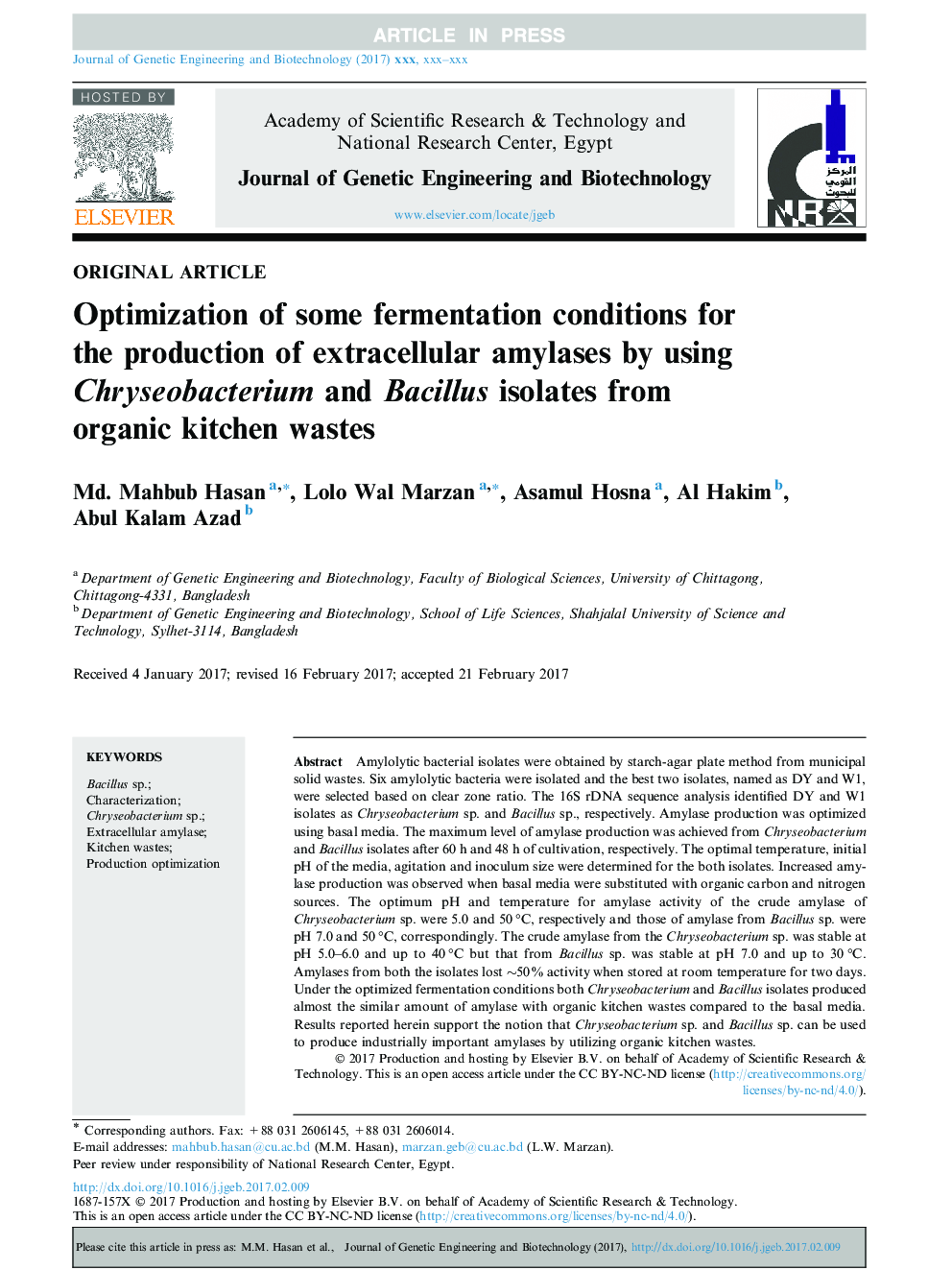| Article ID | Journal | Published Year | Pages | File Type |
|---|---|---|---|---|
| 8416401 | Journal of Genetic Engineering and Biotechnology | 2017 | 10 Pages |
Abstract
Amylolytic bacterial isolates were obtained by starch-agar plate method from municipal solid wastes. Six amylolytic bacteria were isolated and the best two isolates, named as DY and W1, were selected based on clear zone ratio. The 16S rDNA sequence analysis identified DY and W1 isolates as Chryseobacterium sp. and Bacillus sp., respectively. Amylase production was optimized using basal media. The maximum level of amylase production was achieved from Chryseobacterium and Bacillus isolates after 60 h and 48 h of cultivation, respectively. The optimal temperature, initial pH of the media, agitation and inoculum size were determined for the both isolates. Increased amylase production was observed when basal media were substituted with organic carbon and nitrogen sources. The optimum pH and temperature for amylase activity of the crude amylase of Chryseobacterium sp. were 5.0 and 50 °C, respectively and those of amylase from Bacillus sp. were pH 7.0 and 50 °C, correspondingly. The crude amylase from the Chryseobacterium sp. was stable at pH 5.0-6.0 and up to 40 °C but that from Bacillus sp. was stable at pH 7.0 and up to 30 °C. Amylases from both the isolates lost â¼50% activity when stored at room temperature for two days. Under the optimized fermentation conditions both Chryseobacterium and Bacillus isolates produced almost the similar amount of amylase with organic kitchen wastes compared to the basal media. Results reported herein support the notion that Chryseobacterium sp. and Bacillus sp. can be used to produce industrially important amylases by utilizing organic kitchen wastes.
Related Topics
Life Sciences
Biochemistry, Genetics and Molecular Biology
Biotechnology
Authors
Md. Mahbub Hasan, Lolo Wal Marzan, Asamul Hosna, Al Hakim, Abul Kalam Azad,
